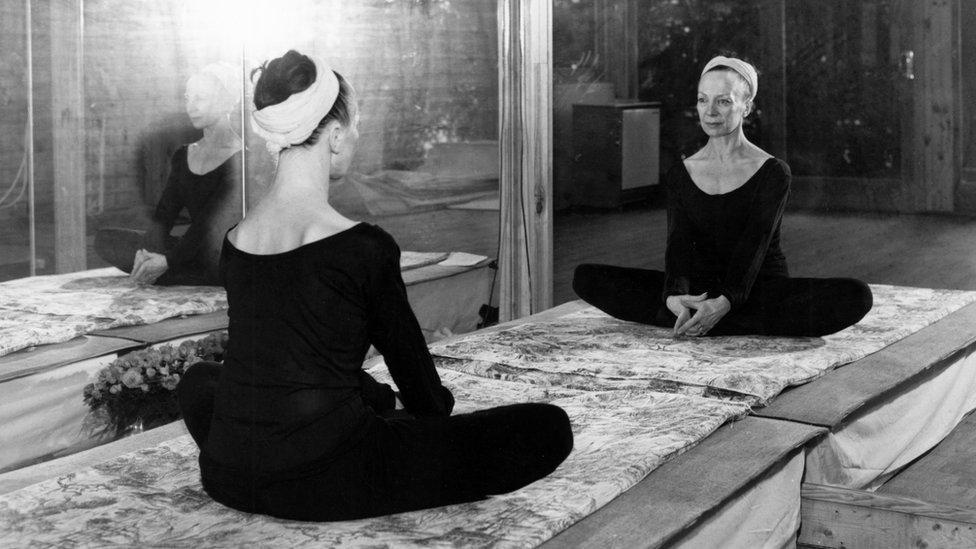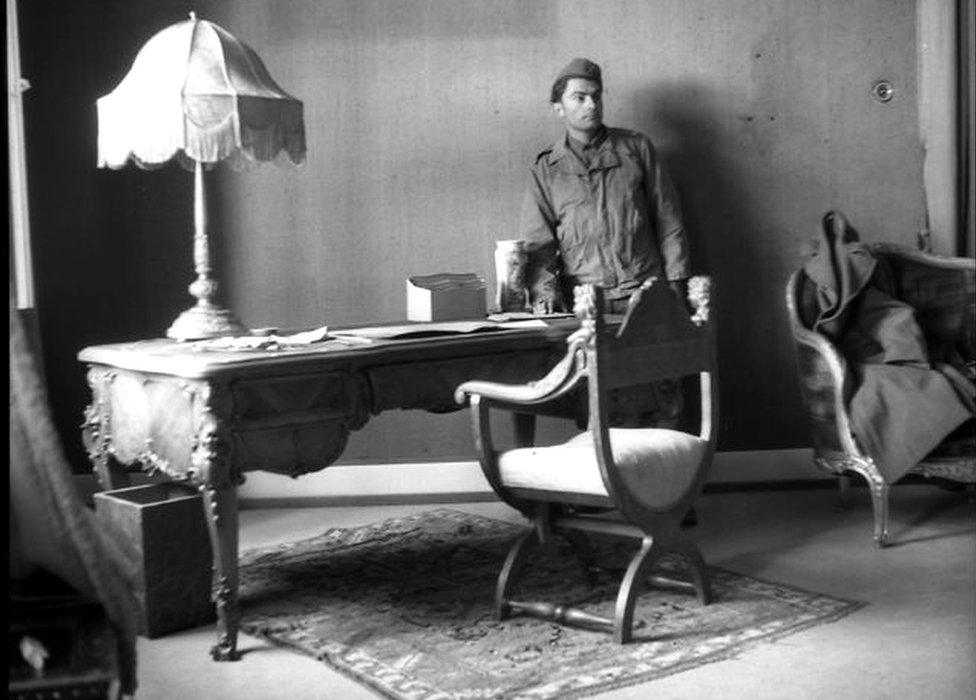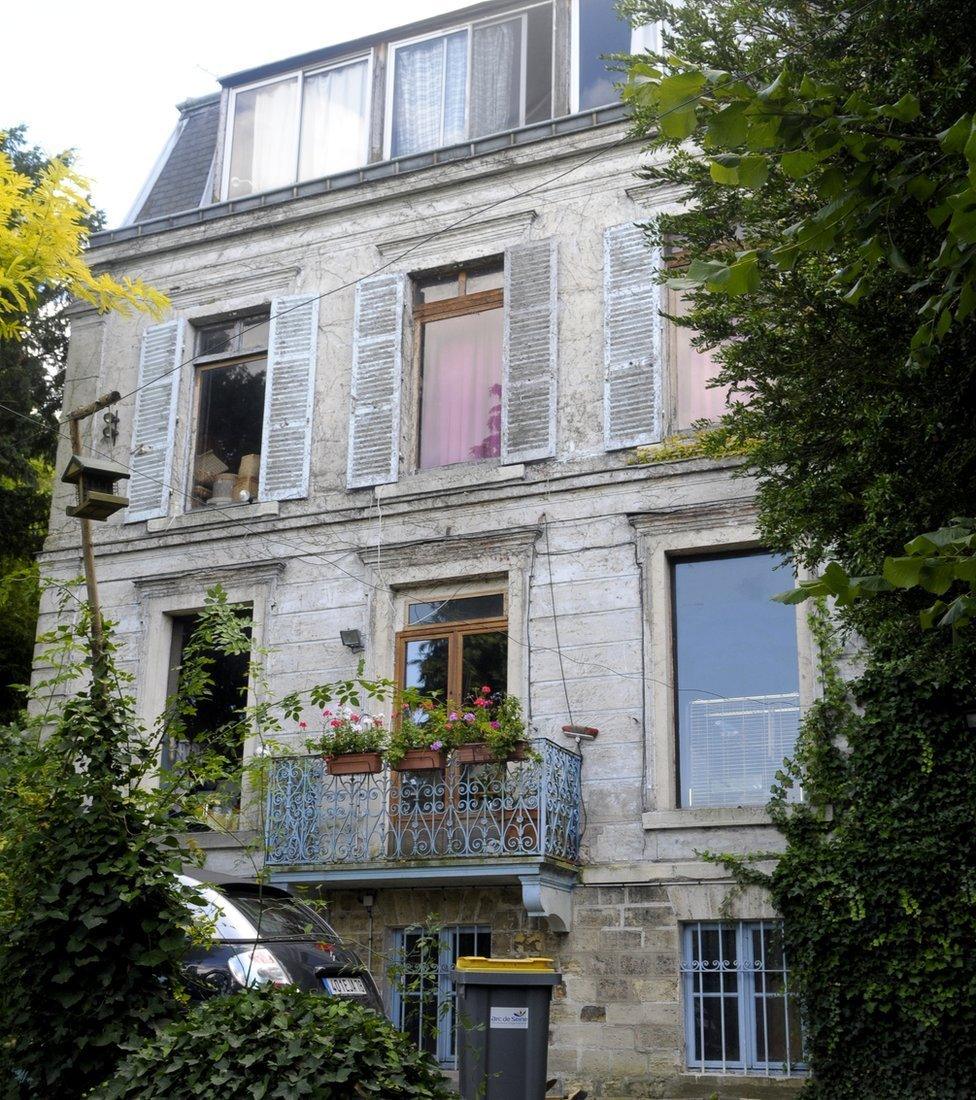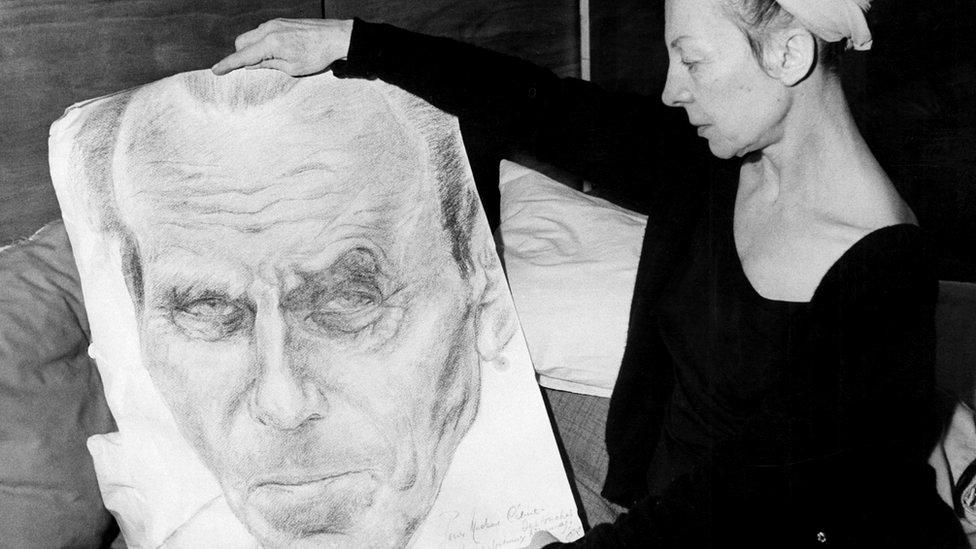Lucette Destouches: Last witness to France's collaborationist regime
- Published

Lucette Destouches, widow of French writer Louis-Ferdinand Céline, seen here in April 1969
When a very old woman died in Paris on Friday 8 November, her passing prompted a few paragraphs in the papers.
Lucette Destouches was 107 years old and had been quite a name in years gone by. A dancer and the wife, then widow, of France's most controversial writer of the last century, Louis-Ferdinand Céline.
She was also the last surviving witness of the tragicomic, final days of France's collaborationist regime - days that were lived out not in Vichy but in a bizarre French microstate created in a southern German castle.
Flight of collaborators who backed the Nazis
It is September 1944 and World War Two is coming to an end in France. Paris has fallen to the allies. The Germans are in headlong retreat.
What to do then, if you have been a collaborator?
Not a run-of-the-mill, low-level, keep-your-options-open kind of collaborator. They would just keep their heads down and trust they were not important enough to be noticed.

The reputation of French author Louis-Ferdinand Céline, seen here in 1932, was tarnished by vitriolic anti-Semitism
No, we are talking about the real cheer-leaders. The ones who had welcomed the Germans, who had set up political parties to support the Germans, who had run pro-German militias to hunt down the Resistance and sent troops to fight with the Germans on the Eastern Front.
Or maybe an award-winning novelist, heralded as a great new voice in French fiction a few years before, but who had since turned his pen to the most poisonous anti-Semitic diatribe, of a kind that actually embarrassed the Germans, and under German occupation in Paris quite openly sided with the invader.
Such was Louis-Ferdinand Céline (born Louis-Ferdinand Destouches), commonly known just as Céline, author of the book Journey to the End of the Night, which is still cited today as one of the great works of European literature.
Escape to a German castle
Céline knew he had to get out. He was viande à poteaux - gallows fodder. Caught by the mob, he would be lynched. Tried, he would be executed.
So Céline fled Paris and, after various adventures, ended up in the surrealistic setting of a small town in Germany called Sigmaringen.
Sigmaringen is also a 1,000-year-old castle that became part of the Hohenzollern dynasty and is perched on a crag high above the River Danube.

Sigmaringen Castle, in the south-western German state of Baden-Württemberg
And it was here, in September 1944, its aristocratic owners having been kicked out by Adolf Hitler, that the diehards of French collaboration were brought, and permitted for a few months to set up a weird facsimile of a French state in exile, complete with flags, border checks and foreign embassies.
Altogether, more than a 1,000 French people came and lived here, among them Céline, accompanied by his wife Lucette, then aged 32.
Lucette was, then, the last witness to this most peculiar of postscripts to the shame of Vichy, France's collaborationist regime.

A French soldier guards the entrance to the castle in Sigmaringen, April 1945
In September 1944, Philippe Pétain and Pierre Laval, the heads of the collaborationist government, were forcibly brought to Sigmaringen by the Germans, who wanted to keep open the possibility of an eventual return.
Pétain and Laval, however, refused to co-operate, so instead it was left to a ragtag band of ultras under a man named Fernand de Brinon to run a kind of Vichy government-in-exile.
Pétain lived on the top floor of the castle, Laval on the floor below. They hated each other so never spoke, and under that were the various so-called ministers, scurrying around and setting up their microscopic bureaucratic empires in the corridors of this ancient castle, all hung with tapestries and hunting trophies and martial portraits of long-forgotten Hohenzollerns.

One of the offices at Sigmaringen Castle, seen here in 1945
Such were the facts. Far more interesting is imagining what on Earth it must have been like, and here we have Céline himself as an aide.
Back in Paris in the 1950s and living with Lucette in Meudon, just outside the French capital, he wrote a book translated into English as Castle to Castle, in which he recalled the Sigmaringen interlude. Like a lot of Céline it reads like the ravings of a tortured mind.
But behind the staccato, flash-bomb prose, you do get a sense of the madness of it all. Waves of RAF bombers constantly pass overhead; in the town there is no food beyond cabbages and beetroot and the lavatories in the inn are overflowing.

Lucette Destouches lived with Céline in this property in Meudon, near Paris, in the 1950s

In the castle, Céline - a doctor by trade - visits his patients: some pretend it can all still be saved and speak of secret weapons and bands of partisans in the woods; others resort to a grim gallows humour; some literally go mad.
They all know that in coming to Sigmaringen they have stripped away all hope of rehabilitation. They are traitors and the end is coming. But life must be lived - still.

Lucette Destouches with a portrait of Céline
In the end, Céline somehow survived, and so did his wife. After a few years in Denmark, some of which were spent in prison, they were allowed back to France.
When Céline died in 1961, his widow had a shared headstone put up in the cemetery with her name also inscribed, and alongside it the dates "1912-19...".
She had assumed she would be dead by the end of the century. She was 20 years out.

You might also be interested in:
Holocaust survivors: The families who weren’t meant to live
- Published12 January 2018

- Published6 November 2019
